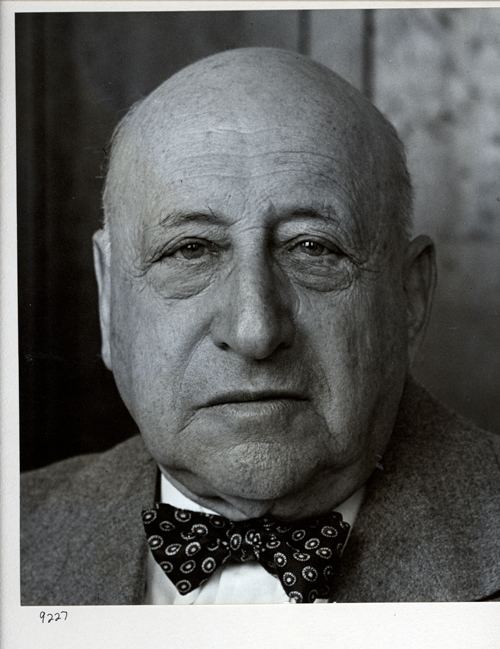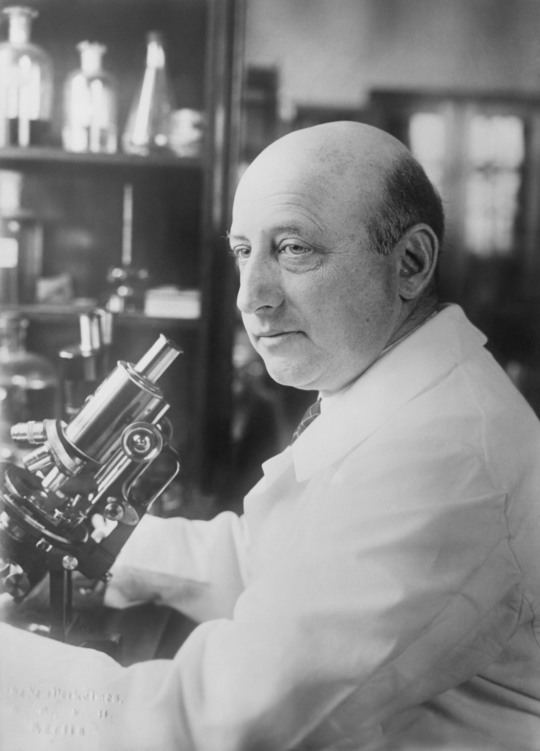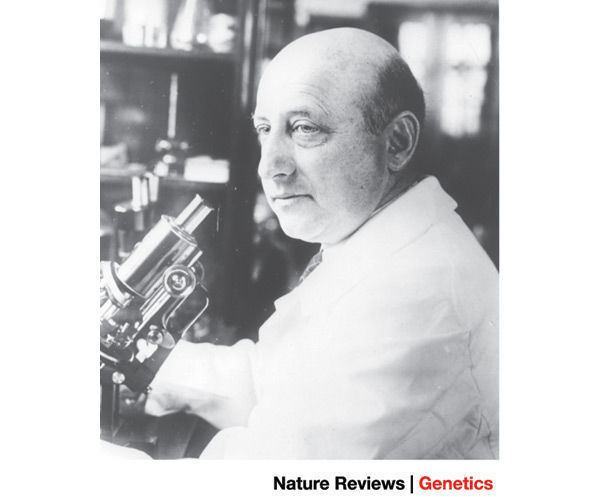Nationality German Fields Genetics | Name Richard Goldschmidt Doctoral advisor Otto Butschli | |
 | ||
Born April 12, 1878Frankfurt am Main, Germany ( 1878-04-12 ) Education Heidelberg University (1899–1902) Awards Guggenheim Fellowship for Natural Sciences, US & Canada Books Material Basis of Evolution, Controversial Geneticist and Creat, Theoretical Genetics, Physiological Genetics, In and Out of the Ivory Tower: Th | ||
Richard Benedict Goldschmidt (April 12, 1878 – April 24, 1958) was a German-born American geneticist. He is considered the first to integrate genetics, development, and evolution. He pioneered understanding of reaction norms, genetic assimilation, dynamical genetics, sex determination, and heterochrony. Controversially, Goldschmidt advanced a model of macroevolution through macromutations that is popularly known as the "Hopeful Monster" hypothesis.
Contents
Goldschmidt also described the nervous system of the nematode, a piece of work that later influenced Sydney Brenner to study the wiring diagram of Caenorhabditis elegans an achievement that later won Brenner and his colleagues the Nobel Prize in 2002.

Childhood and education

Goldschmidt was born in Frankfurt-am-Main, Germany to upper-middle class parents of Ashkenazi Jewish heritage. He had a classical education and entered the University of Heidelberg in 1896, where he became interested in natural history. From 1899 Goldschmidt studied anatomy and zoology at the University of Heidelberg with Otto Butschli and Carl Gegenbaur. He received his Ph.D. under Butschli in 1902, studying development of the trematode Polystomum.
Career

In 1903 Goldschmidt began working as an assistant to Richard Hertwig at the University of Munich, where he continued his work on nematodes and their histology, including studies of the nervous system development of Ascaris and the anatomy of Amphioxus. He founded the histology journal Archiv fur Zellforschung while working in Hertwig's laboratory. Under Hertwig's influence, he also began to take an interest in chromosome behavior and the new field of genetics.
In 1909 Goldschmidt became professor at the University of Munich and, inspired by Wilhelm Johannsen's genetics treatise Elemente der exakten Erblichkeitslehre, began to study sex determination and other aspects of the genetics of the gypsy moth. His studies of the gypsy moth, which culminated in his 1934 monograph Lymantria, became the basis for his theory of sex determination, which he developed from 1911 until 1931. Goldschmidt left Munich in 1914 for the position as head of the genetics section of the newly founded Kaiser Wilhelm Institute for Biology.
During a field trip to Japan in 1914 he was not able to return to Germany due to the outbreak of the First World War and got stranded in the United States. He ended up in an internment camp for "dangerous Germans". After his release in 1918 he returned to Germany in 1919. Because he was Jewish he had to leave Germany in 1935 and emigrated to the United States, where he became professor at the University of California, Berkeley.
Evolution
Goldschmidt was the first scientist to use the term "hopeful monster". He thought that small gradual changes could not bridge the hypothetical divide between microevolution and macroevolution. In his book The Material Basis of Evolution (1940), he wrote "the change from species to species is not a change involving more and more additional atomistic changes, but a complete change of the primary pattern or reaction system into a new one, which afterwards may again produce intraspecific variation by micromutation." Goldschmidt believed the large changes in evolution were caused by macromutations (large mutations). His ideas about macromutations became known as the hopeful monster hypothesis, which is considered a type of saltational evolution.
According to Goldschmidt, "biologists seem inclined to think that because they have not themselves seen a 'large' mutation, such a thing cannot be possible. But such a mutation need only be an event of the most extraordinary rarity to provide the world with the important material for evolution". Goldschmidt believed that the neo-Darwinian view of gradual accuumulation of small mutations was important but could account for variation only within species (microevolution) and was not a powerful enough source of evolutionary novelty to explain new species. Instead he believed that large genetic differences between species required profound "macro-mutations" a source for large genetic changes (macroevolution) which once in a while could occur as a "hopeful monster".
Goldschmidt is usually referred to as a "non-Darwinian"; however, he did not object to the general microevolutionary principles of the Darwinians. He veered from the synthetic theory only in his belief that a new species develops suddenly through discontinuous variation, or macromutation. Goldschmidt presented his hypothesis when neo-Darwinism was becoming dominant in the 1940s and 1950s, and strongly protested against the strict gradualism of neo-Darwinian theorists. His ideas were accordingly seen as highly unorthodox by most scientists and were subjected to ridicule and scorn. However, there has been a recent interest in the ideas of Goldschmidt in the field of evolutionary developmental biology, as some scientists, such as Gunter Theisen and Scott F. Gilbert, are convinced he was not entirely wrong. Goldschmidt presented two mechanisms by which hopeful monsters might work. One mechanism, involving “systemic mutations”, rejected the classical gene concept and is no longer considered by modern science; however, his second mechanism involved “developmental macromutations” in “rate genes” or “controlling genes” that change early development and thus cause large effects in the adult phenotype. These kinds of mutations are similar to those considered in contemporary evolutionary developmental biology.
